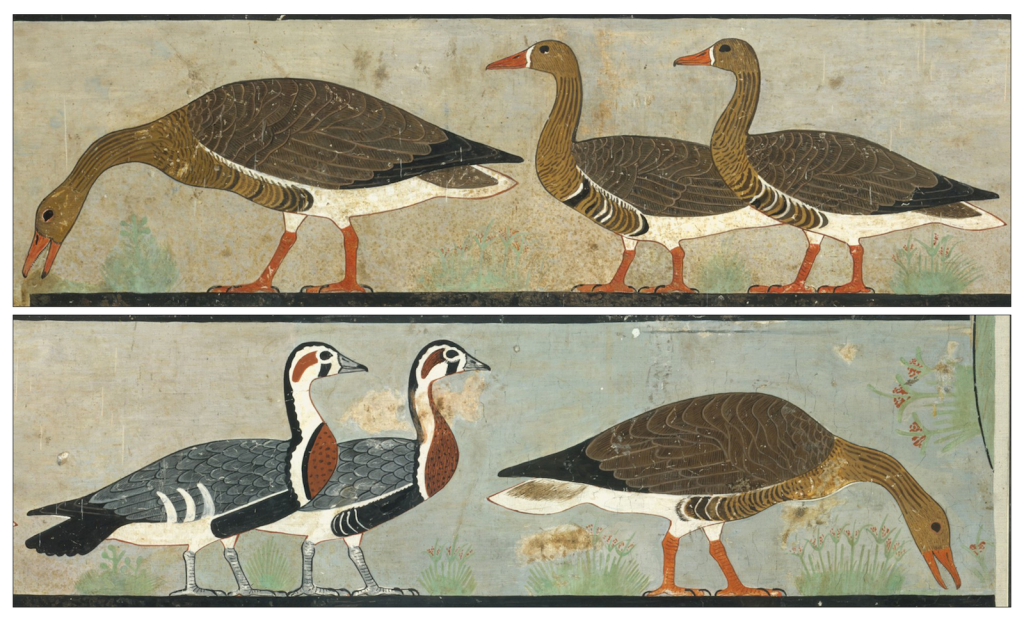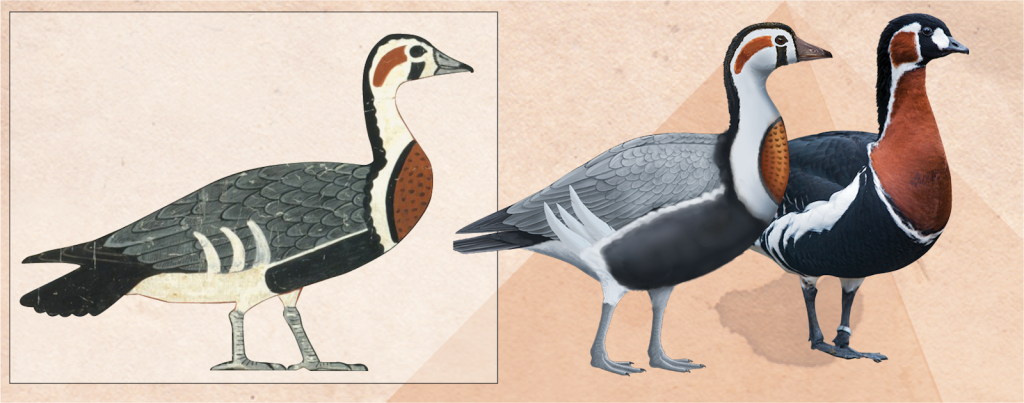Art World
It Turns Out That an Ancient Painting Known as ‘Egypt’s Mona Lisa’ Actually Depicts an Extinct Breed of Goose
The Australian researcher says it’s the only known documentation of the species.

The Australian researcher says it’s the only known documentation of the species.

Brian Boucher

It may not be a golden goose, but a feathered friend depicted in an ancient Egyptian painting is still delighting scientists the world over.
Anthony Romilio, a researcher in the Dinosaur Lab at the University of Queensland in Brisbane, Australia, believes that the speckled goose in a 4,600-year-old painting often referred to as “Egypt’s Mona Lisa” is, in fact, the only known documentation of an ancient and now-extinct species.
Called Meidum Geese, the painting was discovered in the 1800s in the Chapel of Itet at Meidum. Itet was the wife of the vizier Nefermaat, who ruled Egypt from 2610 to 2590 B.C. The powerful couple was able to commission works from the most sought-after artists of the day, according to the Metropolitan Museum of Art. (A facsimile of Meidum Geese hangs in the New York institution; the original is in the Egyptian Museum in Cairo.)
Bearing unique patterns over many parts of its body, the bird pictured doesn’t look anything like modern red-breasted geese, Romilio observed.

From left, a depiction of the ancient goose, by C.K. Wilkinson, a reconstruction by Anthony Romilio, and a modern species. Photo by Tambako the Jaguar.
“Apparently no one realized it depicted an unknown species,” Romilio said in the university’s announcement of the find. “Artistic license could account for the differences with modern geese, but artworks from this site have extremely realistic depictions of other birds and mammals.”
Another point supporting his hypothesis: Archaeological digs haven’t turned up the bones of any modern geese at ancient Egyptian sites.
“From a zoological perspective, the Egyptian artwork is the only documentation of this distinctively patterned goose, which appears now to be globally extinct,” said Romilio, who used the “Tobias criteria” for identifying avian species.
Romilio’s findings appear in the Journal of Archaeological Science.
“In my spare time I’m an artist as well, so this blends my love of animals with my interest in historical artworks,” Romilio told Artnet News. “This is the first time I’ve broken away from paleontological work. Normally my time scale is quite a lot longer! But ultimately my interest is animals.”
The diverse flora and fauna that appear in Egyptian art, Romilio says, lived there when the climate was quite different from the current desert, and instead featured grasslands, lakes, and woodlands. Art from tombs and temples often depicts these varied animals. Among the other species no longer with us today but present in Egyptian art: the auroch, which is a predecessor of modern cattle, as well as forms of gazelle, oryx, antelope, and donkey.
The only thing that might take some of the excitement out of Romilio’s discovery is the assertion, by Egyptologist Francesco Tiradritti in a 2015 article in Il Giornale dell’Arte and The Art Newspaper, that the painting is a fake, and may have actually been painted by the person who “discovered” it.
Romilio isn’t convinced. “There’s been a lot of debate about that,” he acknowledged. “I don’t see any reason not to think it was painted by ancient artisans, when viewed in context with the other artworks from that chapel. In addition to those geese, you’ve got other animals that are really quite detailed and naturalistically portrayed.”